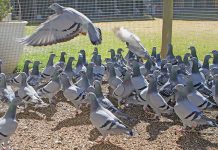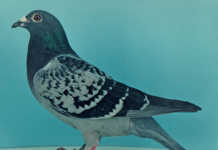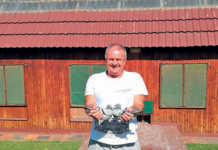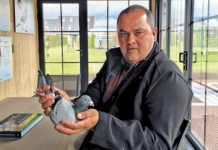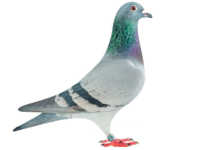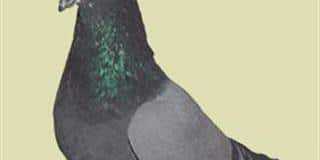Over the past few weeks we’ve been providing advice to those interested in taking up pigeon racing. As we’ve seen, the most crucial consideration is whether you have the time to devote to the care and training of your pigeons. We’ve also discussed how important it is to do some research before building your loft. In this issue, I want to focus on a few points of general interest that will help beginners on the way to success.
Loft security
If you plan to breed your own birds for racing purposes, you will need a separate stock loft to house the breeders. They have to be kept secure or else they will fly back to the seller. Add a small enclosed area when you construct the entrance to your stock loft. This should contain an outer and inner door. After the pigeons land here, you can close the outer door, then open the inner door to let them into the loft proper. This will prevent the birds already inside the loft from escaping. Given the high cost of prime pigeon stock, going to this extra bit of trouble will be well worth it.
Predators
If you live in an area where African civets, snakes, rats, mice and other predators are common, construct your loft above the ground, with the floor resting on pillars set away from the corners. If a predator climbs up a pillar, it will then reach a dead end. Loft ventilation should be protected with fine mesh strong enough to resist the chewing of a determined intruder. Install your trap entrances high up against the loft front to prevent the pigeons from being caught as they enter. Finally, enclose a portion of your backyard around the loft area to allow the pigeons privacy and protect them from unwanted visitors.
Choice of stock
It’s wise to acquire quality stock from similar climatic conditions to your region. If this isn’t possible, study what works for your neighbouring champion fanciers and approach their suppliers. Study the prevailing weather conditions during races in your area. With hot conditions and constant headwinds, for example, a parcel of sprinters may be the wrong genetic choice of pigeon stock to start with.
Desired quantities
A stock hen lays two eggs at a time, and a healthy stock pair will raise three to four pairs of youngsters per breeding season. You need eight to 10 stock pairs to breed 80 or more youngsters to see you through the next season. It’s a good idea to give a breeding pair a rest after the second or third round of continual breeding.
Breeding late youngsters
Youngsters weaned on, say, Christmas Day will be old enough to have completed their moulting prior to the start of the racing season in May/June. A hen usually lays her first egg eight to 10 days after mating and a second egg 48 hours later. So if you want to breed a late round, give the breeders a break in December and arrange a re-mating around 20 January.
These youngsters can be loft- and road-trained in preparation for the races only a year later, which means a stronger team that year. You must have the loft space to house them separately, though.
Keeping racers only
If you don’t have space for a stock and race loft, you may need to acquire 30 to 40 day-old youngsters from reliable suppliers to fill up your team for the following racing season. The advantage of this setup is that you may also use these racers as breeders at the end of each racing season, provided they are rested after the season and receive ample nutrition before the breeding commences.
Vaccination
Vaccination against pigeon pox and Paramyxovirus is required by law in South Africa. Medpet, based in Benrose, Johannesburg, is a reputable avian and pigeon medical products supplier. Its product, Medipox, is government-approved and effective against both dry and wet pox. The pigeons can be inoculated from five weeks of age or at least two months before the racing season starts. Avoid waiting too long and leaving the birds exposed.
More and more fanciers are vaccinating their youngsters in the nest once their feathers are fully grown and again three weeks later with a booster. Ensure the vaccine is registered for use in racing pigeons and stored properly.


